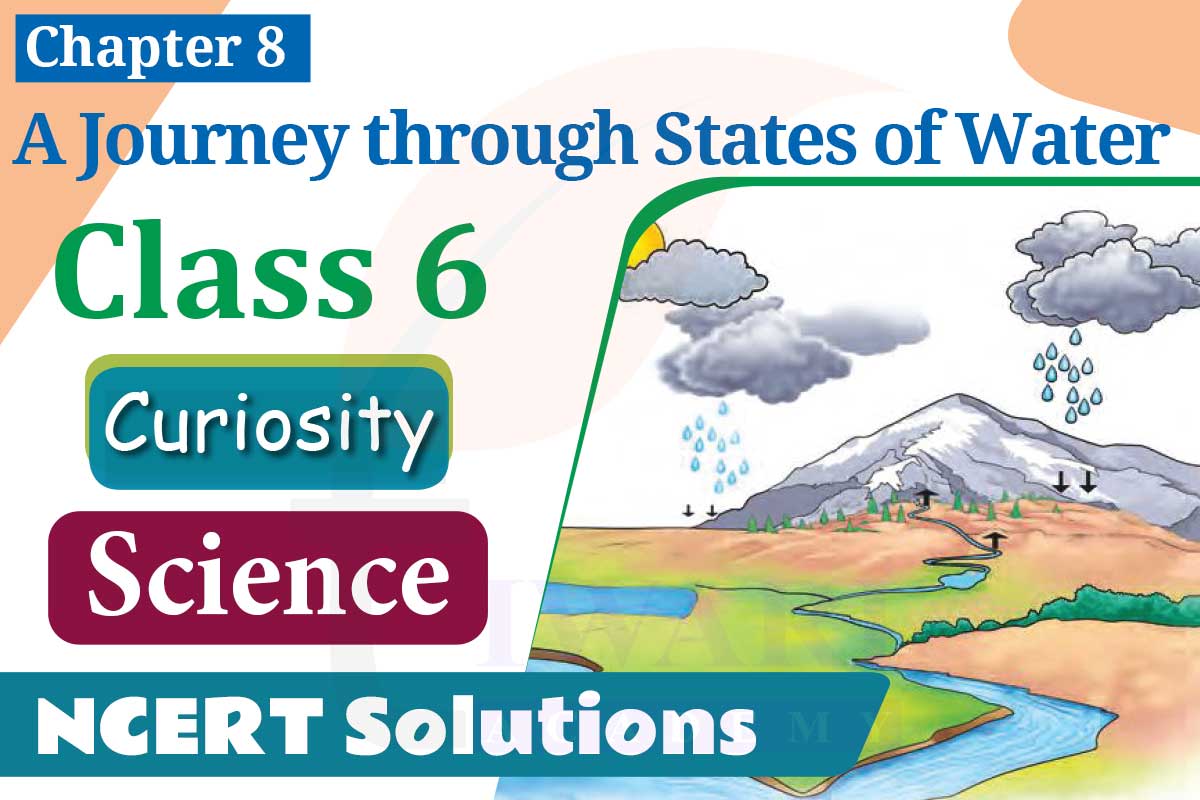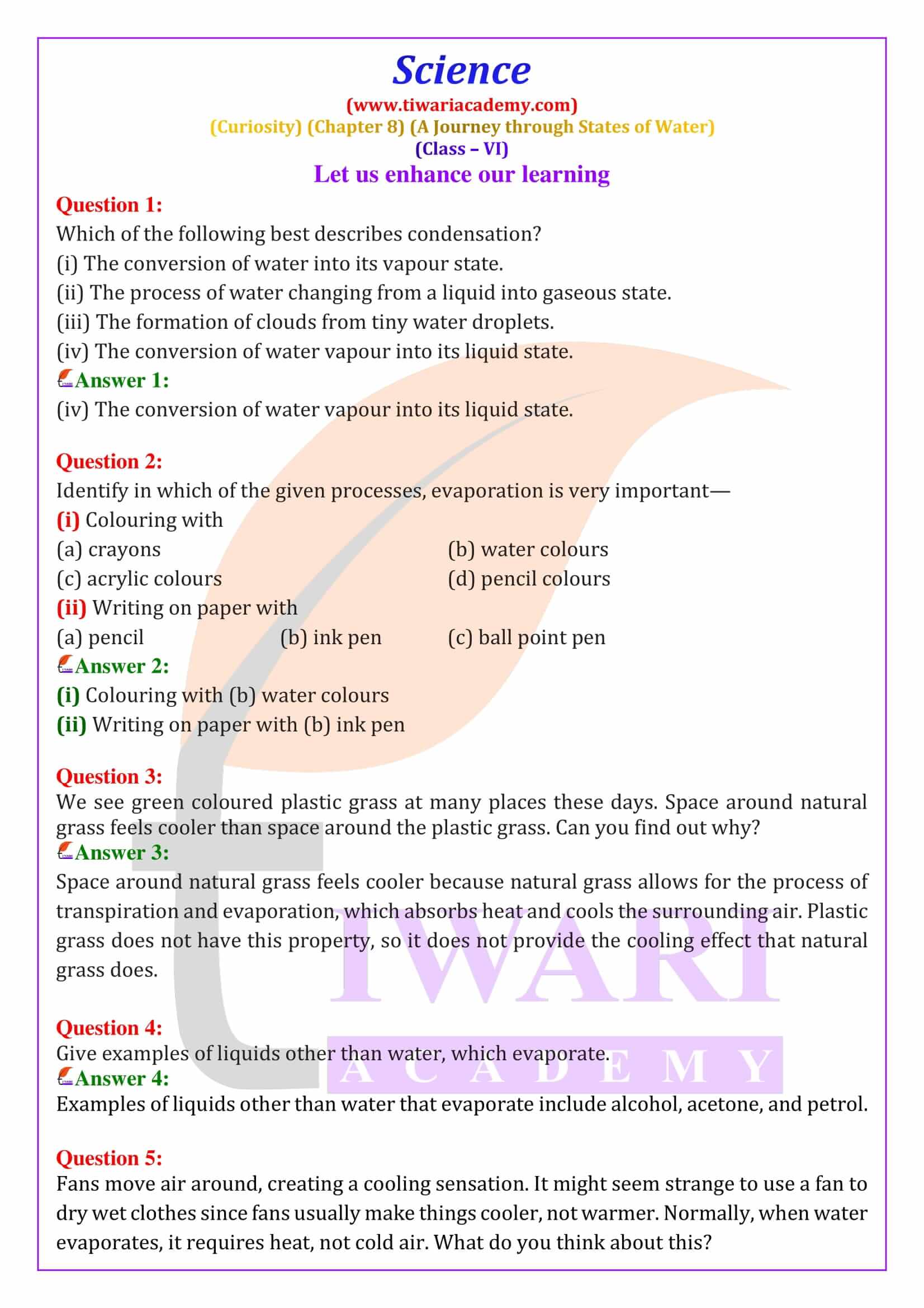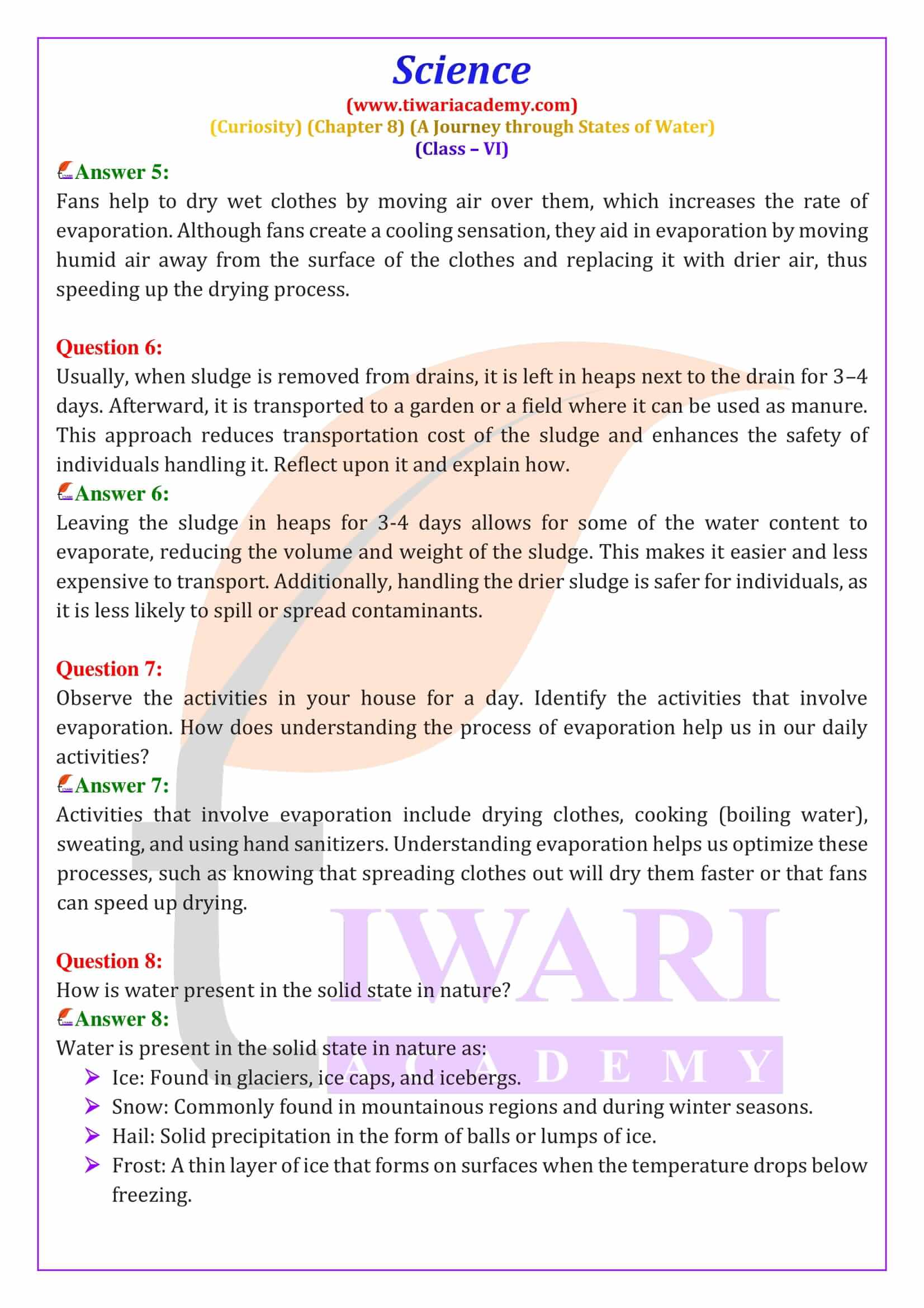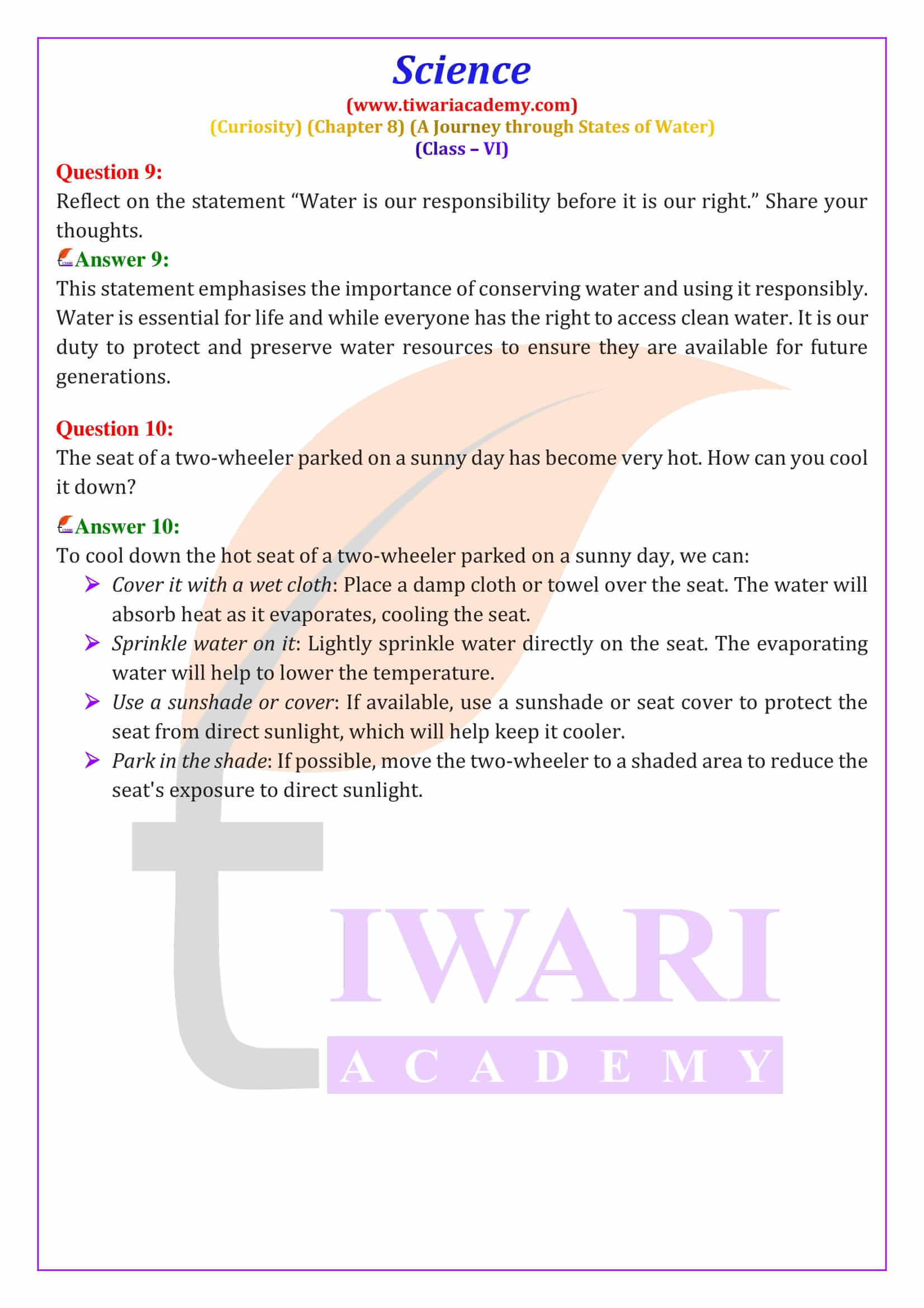NCERT Solutions for Class 6 Science Curiosity Chapter 8 A Journey through States of Water updated for academic session 2025-26. Get here all the question answers of new addition 6th science textbook in detail.
Class 6 Science Curiosity Chapter 8 A Journey through States of Water
Investigating Water’s Disappearing Act
On a rainy morning, Aavi and Thirav observed water puddles on their school playground. By evening, some puddles had disappeared, prompting curiosity about where the water went. Through experimentation, they found that water could evaporate into the air or seep into the ground. Activity 8.2 involved placing water on a steel plate to observe if it seeped through or evaporated. They concluded that evaporation, a process where water turns into vapor, was responsible for the disappearing water. Common examples of evaporation include drying clothes and mopped floors.

Another Mystery: Condensation
While making lemonade, Aavi and Thirav noticed water droplets on the outer surface of a glass with ice cubes. This led them to explore condensation, the process where water vapor in the air turns into liquid upon contact with a cold surface. Activity 8.3 involved observing these droplets and recording observations. They found that condensation occurs when water vapor touches a cold surface, forming visible droplets. This concept explains dew on plants in the morning and water droplets inside a covered utensil with boiling water.
Different States of Water
Water exists in three states: solid, liquid, and gas. In the solid state (ice), water retains its shape. As a liquid, it takes the shape of its container but maintains a constant volume. In the gaseous state (water vapor), it spreads out to fill any space. Activity 8.5 helped students identify these properties by observing how water behaves when transferred between containers and when it evaporates from a surface. Other substances, such as wax and ghee, also exhibit these states. Examples of solids include stones and wood; liquids include milk and oil; gases include oxygen and carbon dioxide.
Changing States of Water
The state of water can change through heating or cooling. Heating ice turns it into liquid water, and further heating converts it into vapor. Conversely, cooling vapor condenses it back into liquid, and further cooling freezes it into ice. Activity 8.6 demonstrated these transitions, highlighting processes like melting and freezing. For instance, melting candle wax into liquid and solidifying it upon cooling illustrates this concept. Similarly, coconut oil solidifies in winter. Understanding these processes is crucial for activities involving state changes, such as cooking or preserving food.
Evaporation Rates
Evaporation rates vary based on conditions like temperature, humidity, and exposed surface area. Activity 8.7 compared evaporation from a bottle cap and a plate, showing faster evaporation from the plate due to its larger exposed area. Factors such as wind and heat also speed up evaporation, as seen with drying clothes on sunny or windy days. Further activities explored these variables, helping students understand how different conditions affect evaporation rates. This knowledge is useful for practical applications like drying clothes or cooling environments.
Cooling Effect and Water Cycle
Evaporation causes cooling, as observed when Aavi’s mother used an earthen pot to cool water. Water seeping through the pot’s surface evaporates, cooling the remaining water. Activity 8.9 involved creating a pot-in-pot cooler to explore this effect. Condensation, crucial in the water cycle, was demonstrated in Activity 8.10, where water vapor formed clouds around dust particles. The water cycle includes evaporation, condensation, and precipitation, ensuring water circulates between the earth and atmosphere. This cycle is vital for maintaining water availability and supporting life.




